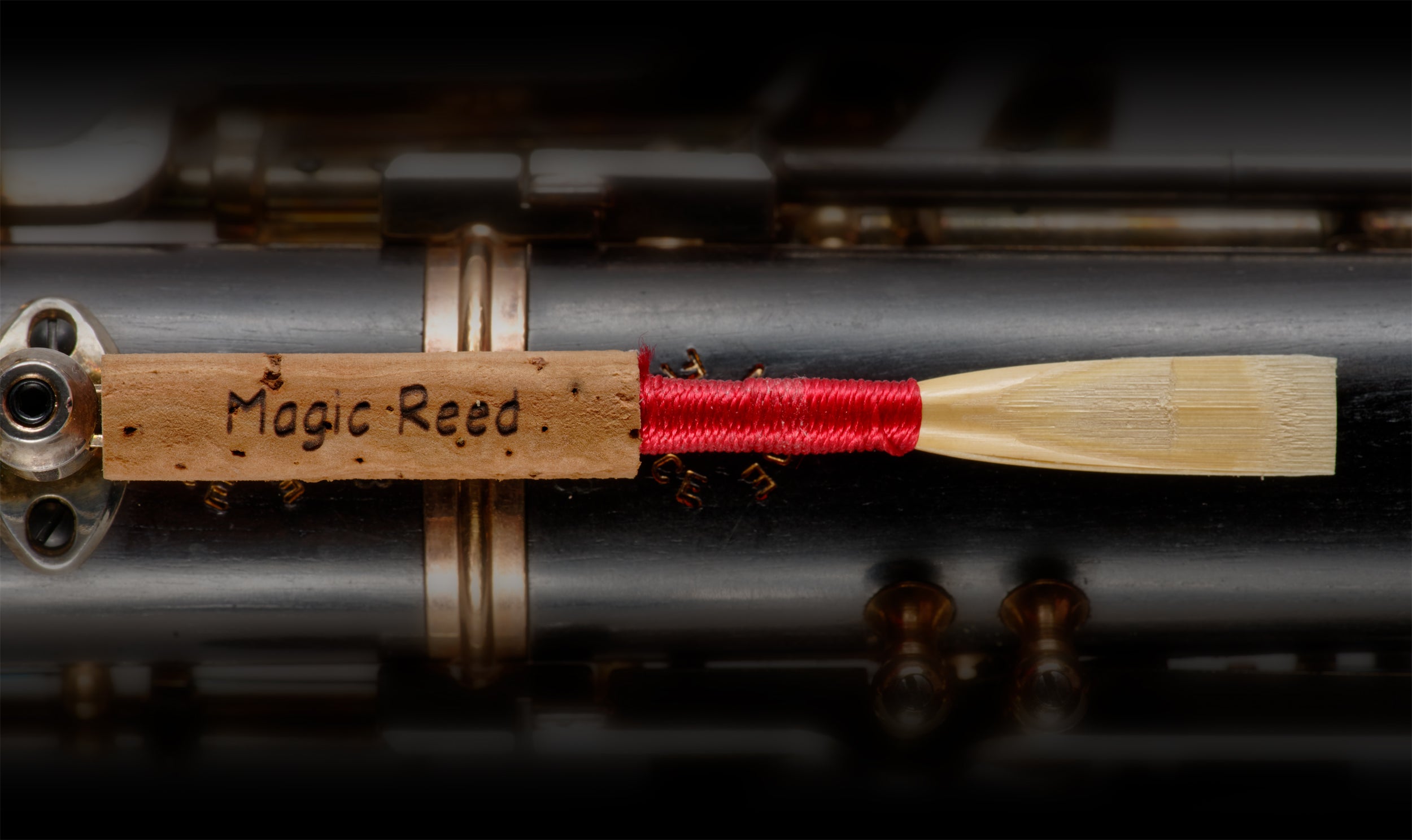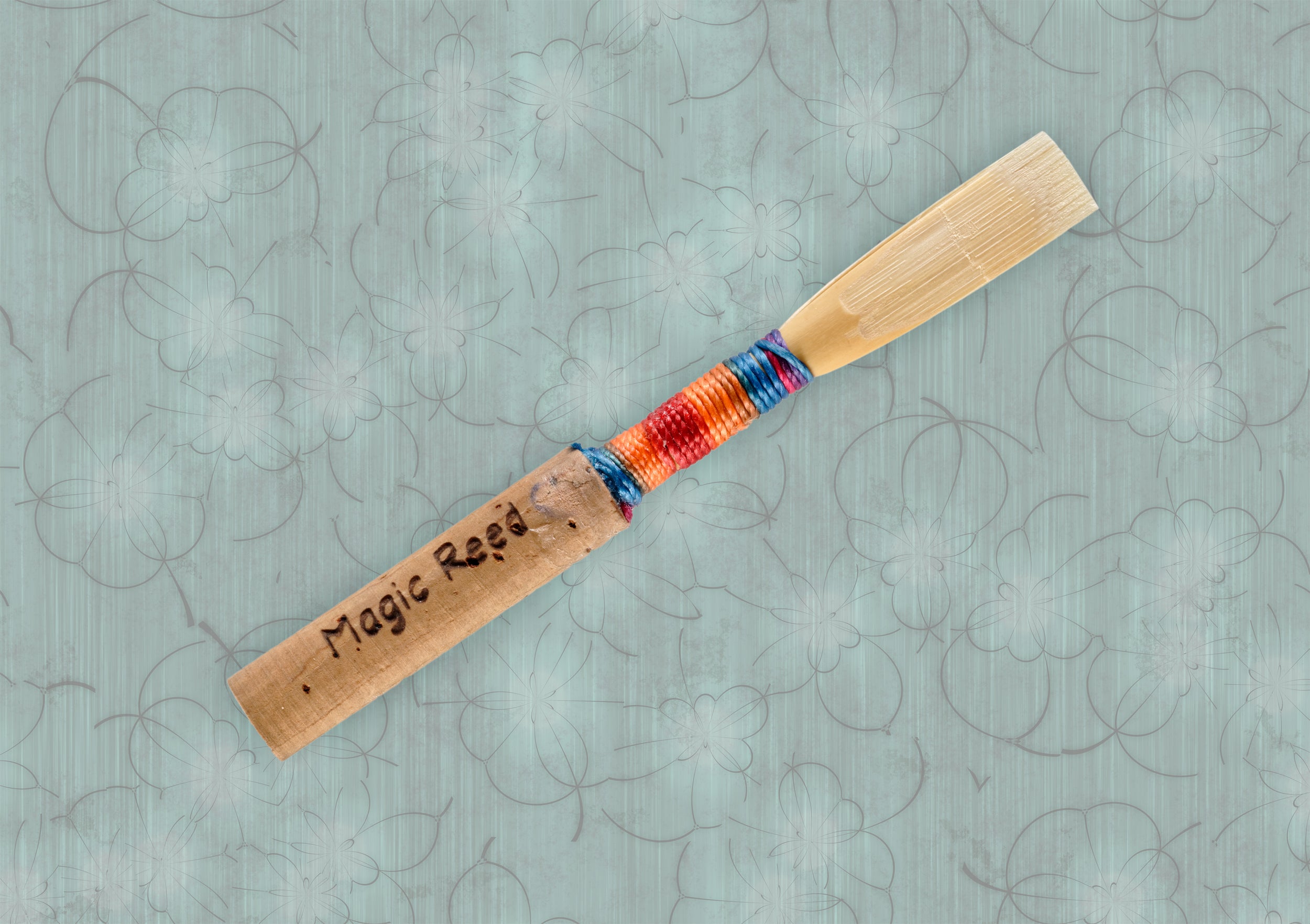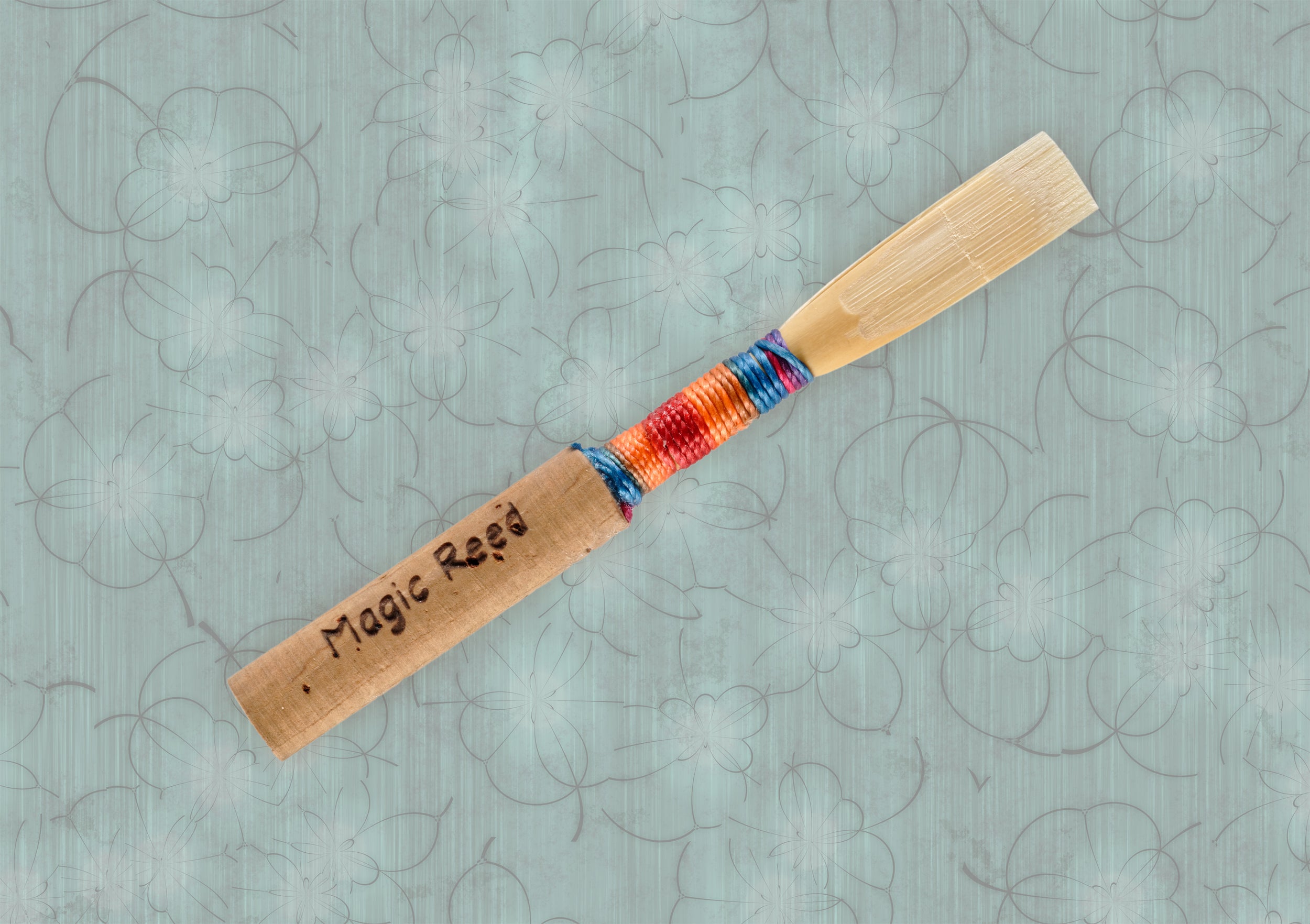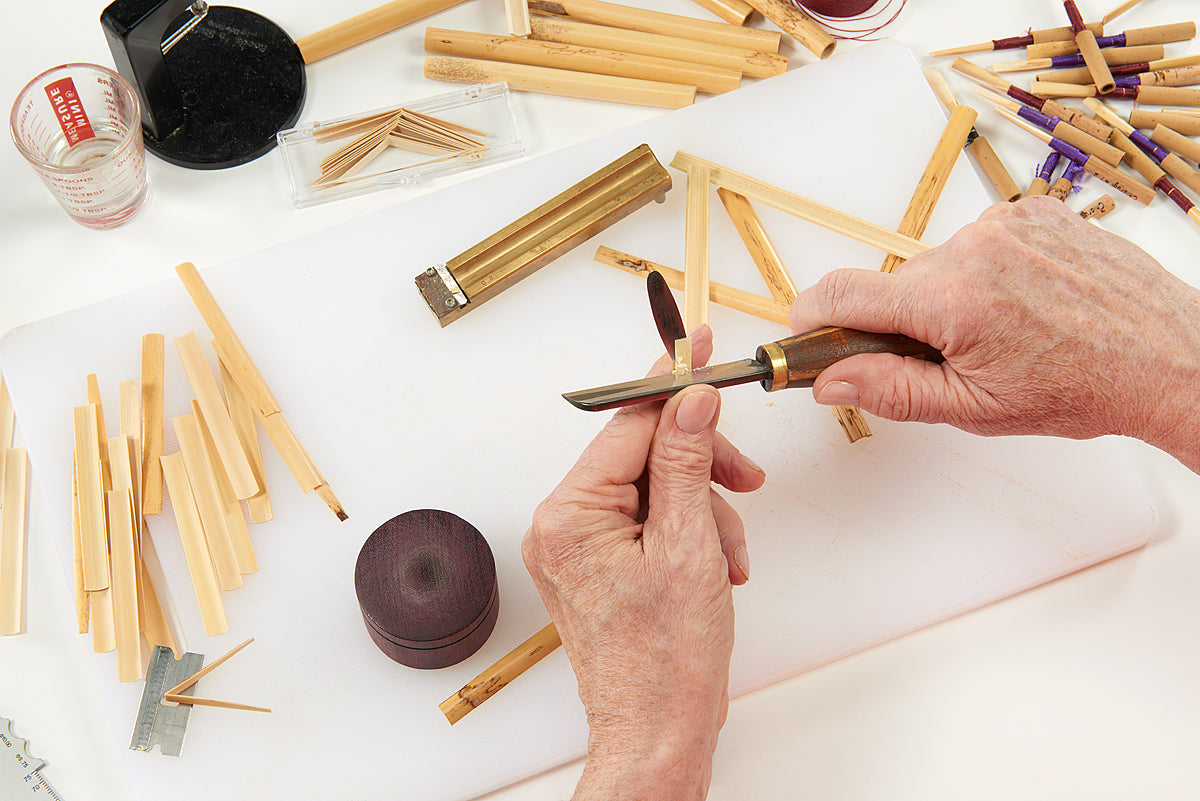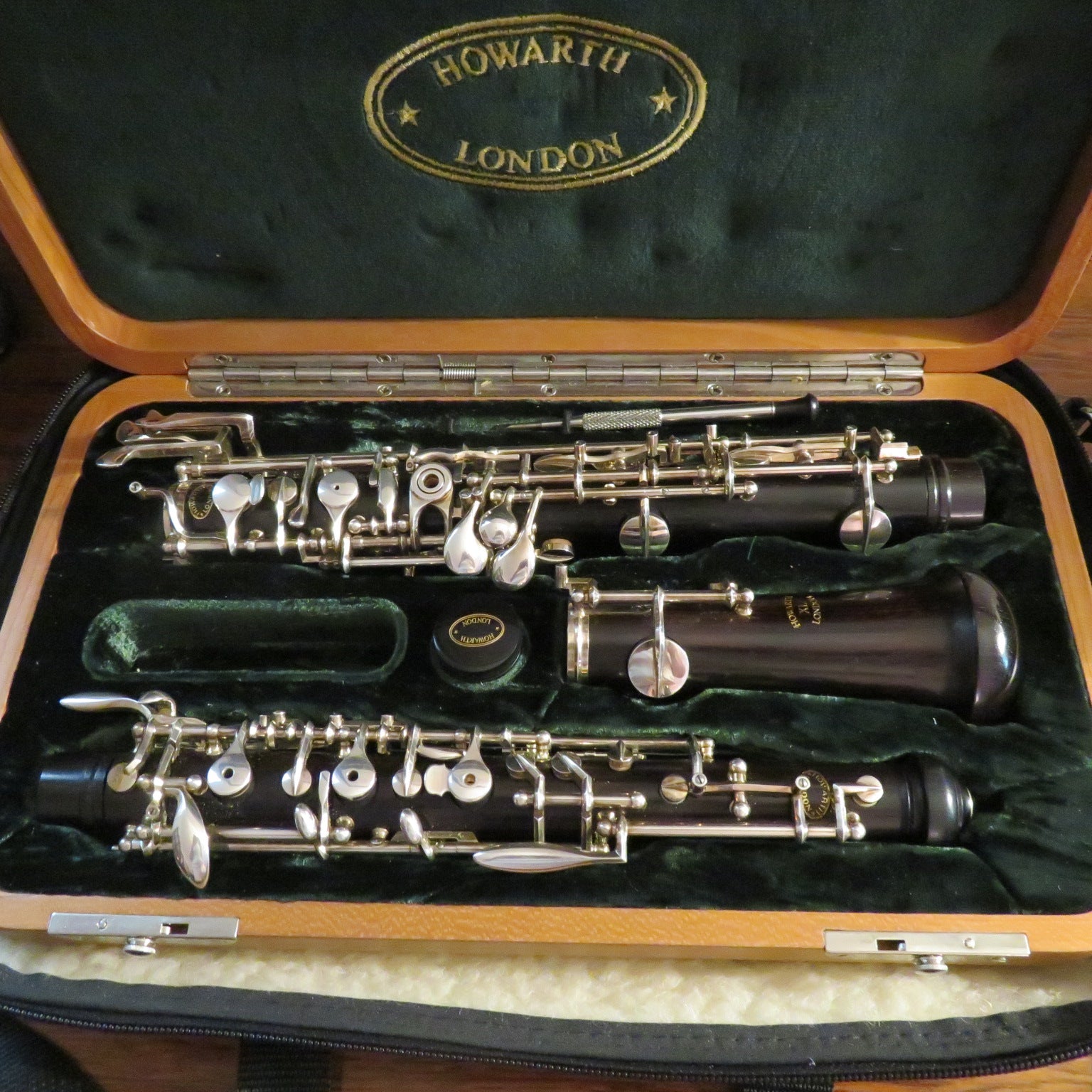
Introduction To The Oboe Instrument
-

-
 by Kathy Sheinhouse
by Kathy Sheinhouse
What Is An Oboe Instrument? How Does It Sound? What Kind Of Woodwind Is It?
The inside joke on oboe is that it is "an ill-wind that nobody blows good". This could not be further from the truth. The oboe is a type of double reed instrument that is the centerpiece of the woodwind section of bands and orchestras. While it may look like a clarinet from afar (which is a single reed instrument) its bore size is much slimmer and fingering systems are different. It is a very old instrument with many iterations since it came onto the scene as a shawm. Its standard wood for a modern oboe is grenadilla because it is such a hard wood that is less susceptible to cracking. However, other exotic woods are used, including rosewood, boxwood and even snakewood which is so rare that one oboe sold for $20,000 on e-bay. Due to changes in import laws and the need to eliminate cracking, there are also resin oboes on the market. While they were originally most popular for school music programs, they have gained acceptance at the professional level.
How Does An Oboe Sound?
The oboe is a treble instrument with a sound all its own with a sweet penetrating sound that is highly expressive. Because it is made with a conical bore instead to the cylindrical bore found in flutes and clarinets, it has a rich tone that is more easily heard. It reaches the back of the concert hall without playing fortissimo. There used to be an EF Hutton commercial with a tag "when EF Hutton speaks, people listed". This is true for oboe. It is assigned the job of tuning the orchestra, and all orchestra musicians lean in to get the pitch just right. In 1696, Henry Playford described the oboe as "Majestical and Stately, and not much Inferior to the Trumpet". It has also been described as like "that of a duck if the duck were a songbird". This is generally a pejorative term, mostly used to describe the sound quality of students during the early stage of their studies. Oboes and oboists have personal tones. A trained ear will pick up differences between European and American styles. American schools of playing have even more subtle differences. The best thing to do is to listen to a variety of players to cultivate your concept of sound. You could start with a professional recording of Gabriel's Oboe that you can find on You tube.
What Is The Oboe Family Of Instruments?
Developing a concept of sound on oboe is essential to good oboe playing. As an 11 year old beginner, I listened to Bach Arias in my family's music library to figure out what I was supposed to sound like. I got more confused than ever. I could not figure out how the oboe could sound so different from recording to recording. The embarrassing answer is- the instruments played were not all oboes- but were in the oboe family. The standard oboe has several siblings of various sizes and playing ranges. The members of the oboe family, descending in pitch are piccolo oboe, oboe, oboe d'amore, col anglers, bass oboe and heckelphone. The piccolo, bass oboe and heckelphone are rarely played in concert. Oboe d'amore is more of a church instrument with some beautiful works written by Bach. Cor Anglais (English horn) is played with some frequency in bands, orchestras and small ensembles. Professional oboists most always have one. While there is a smaller repertoire of solo music available for performance, there has been a growth of composition in the 20th century. I hope that this gives you a basic understanding of this wonderful instrument.


